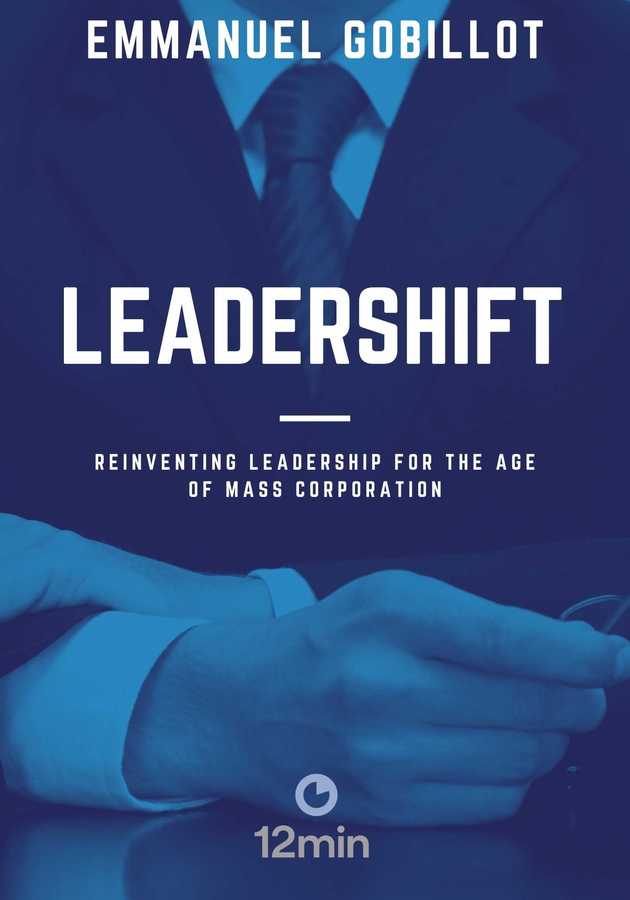The main objective Bernard Garrette, Corey Phelps, and Olivier Sibony had when writing ‘’Cracked It’’ was simple - to teach readers how to tackle complex business problems. They accomplish it by writing about common pitfalls that emerge when solving problems, and revealing the so-called 4S framework designed to help people overcome them. So, get ready to learn to crack the solution to any problem that comes your way!
What would you do if you were Michael Dell?
On July 16, 2004, a longtime Dell senior executive and Chief Operations Officer, Kevin Rollins, became CEO of Dell Inc., formerly known as Dell Computer. Before becoming a part of the company in 1996, Rollins worked for consultancy firm Bain & Company and cooperated with Dell by being its business model advisor. At the time he gained the CEO title, Dell was the world’s largest and most profitable producer of computers, with its stock closing just above $35 - ‘’the highest since the bursting of the tech bubble in the summer of 2000.’’ However, two and a half years later, in 2007, Dell Inc. was in trouble. Revenue growth had slowed significantly, market share declined, and the company was no longer at the top as the world’s largest computer manufacturer. It also faced other problems, such as recalling over four million laptops due to battery explosions or ignitions, and employees declined confidence in Dell leadership.
So, in early 2007, Michael Dell, Chairman and largest shareholder of Dell, had a business problem to solve. Instead of hearing what he did, pause for a moment and ask yourself a question - what would you do if you were in his shoes back in 2007? Since the problems started once Rollins became the CEO, you might think the answer is apparent - Rollins was to blame and should have been replaced as CEO. But, is the solution that simple? If it had been, that would mean the problem Dell faced was much less complicated. Nevertheless, it ‘’involved a complex set of poorly understood factors, which made it hard to define the problem, let alone know how to solve it,’’ the authors note. So, instead of jumping to what seemed the most logical conclusion, the problem-solving process should have included defining, structuring, and analyzing the problem and then coming up with potential solutions, among which we chose the one most appropriate.
Should you be like Hamlet or Othello?
Do you know what the tragedy of the famous Shakespearean character Othello is? He killed his wife Desdemona out of belief she cheated on him. The truth was, however, different - Desdemona wasn’t unfaithful as the traitor Iago wanted to present her. He convinced Othello that Desdemona and Cassio were lovers and used her handkerchief found in Cassio's lodgings to confirm his claims. This handkerchief was indeed a possession of Desdemona - but she did not give it to Cassio but accidentally dropped it. Then, Iago took it and used it as false evidence.
When we face a problem, just like Othello, we often quickly jump to conclusions and take action without questioning implicit assumptions or other emotions that dictate our perception and interpretation of events and information. What Othello should have done is think about the problem more thoroughly, search for missing information, double-check every clue, weigh the pros and cons, and investigate all possible hypotheses. This might remind you of another Shakespearian character, Hamlet, who wanted to be sure his uncle was guilty of killing his father so he could avenge him under legitimate circumstances. So, does this mean we should be like Hamlet rather than Othello in problem-solving? Although Hamlet carefully examined the evidence and weighed his options, he hesitated to take action and, consequently, made irreparable mistakes. As you may remember, at the end of the play, his entire family killed one another, and Denmark surrendered to Norway.
According to the authors, one of the core problems of problem-solving is our tendency to think too fast and jump to solutions without spending time and effort to understand a problem. What we should do instead is ''think slow,'' hence, question the sufficiency of the information and search for more so we can overcome our assumptions and see the problem from a different angle to generate potentially better solutions.
So, to answer the question we posed before about which character should be our role model in solving complex problems - both Hamlet because of his thoroughness and Othello for being action-oriented.
Be careful when defining problems
The first step in ‘’thinking slow’’ about the problem should always be defining it. Without this, your plan to solve it likely won’t work out, and you will lose your time and resources in fighting the wrong battles. This is what, for instance, happened to record companies at the beginning of the 20th century when they faced the problem of MP3 file-sharing.
The last few years of the last century marked a memorable revolution in the music industry - sharing and downloading music files from the Internet became the prevailing way for people to get music. To understand how dramatic this shift was, consider that only a year after launching, Napster, the website that made peer-to-peer file sharing mainstream, had 20 million users downloading 14,000 songs a minute. So, the music industry was in trouble, and they had to come up with a way to win the battle against the file-sharing system. Therefore, many decided that a lawsuit was the best way to do it - one of them was A&M Records, which sued Napster and achieved the goal of unplugging it in 2001. But, as the authors note, this victory was pyrrhic - ‘’the years 2000–09 were a ‘decade horribilis’ for the record companies, who saw two-thirds of their revenues evaporate.’’ So, the battle was won, but the problem was that it wasn’t the right one.
The issue from the beginning was that the record companies defined the problem in the wrong way. Instead of asking how they could stop or drastically reduce the illegal music sharing to protect the business of selling CDs, the authors say they should have posed a ‘’very different and more productive question’’ such as, “How can we make money in a world where technology is changing the distribution of music?” One company, Apple, asked this question. Their answer to it was launching the iPod and iTunes, with which they managed to limit piracy by introducing digital rights management and a portable experience for consumers. So, they saw the opportunity in selling iPods, not music tracks, and this brought them annual revenues of around $8 billion from 2006 to 2010 as well as the foundation for the phenomenal success of iPhones.
The 4S Method
To help people avoid common pitfalls they run into during the problem-solving process, the authors designed the 4S Method that, as the name suggests, consists of four stages - State, Structure, Solve, and Sell. Let’s explore what each of these stages means through an example.
Tracy has been appointed as the new CEO of Solar, a multi-business, family-owned industrial company that sells packaging products to large corporate customers. Over the years, Solar has acquired firms specialized in different packaging technologies to provide a full range of packaging solutions to its customers, and, at the moment when Tracy joins, two business units - Pluto and Uranus - are in red. Tracy’s task is to decide the course of action and sell the solution to the Board.
The first step Tracy needs to take is to state the right problem (State Phase). Although she already has some information, such as those about the losses of these units, Tracy should ask herself whether she knows enough to begin the problem-solving. Once she does this, she might discover that she doesn’t know ‘’the extent of bleeding,’’ that is, whether the losses of Pluto and Uranus threaten the corporation's viability and are an urgent problem. Exploring the answer to this question might lead Tracy to gather data or observe and engage with the users to discover their needs and opinions.
Once she states the problem, Tracy should think of actions to solve it (Structure Phase). Here, she can apply the hypothesis-driven approach and treat the idea for the solution as a hypothesis to be tested. Say that Tracy hypothesizes that Solar should sell Pluto and Uranus. To test this hypothesis, she must see whether some conditions are true - for instance, whether the unit for selling is separable from the rest of the business, whether there is a buyer at an acceptable price, and so on.
If Tracy adopts a hypothesis-driven approach in a Structure phase, her next steps depend on whether her hypothesis is confirmed or not. The authors say that wholesale confirmation is rare - ‘’more often, analyzing the hypothesis will cause changes or refinements to it.’’ For instance, she might conclude that they should sell only one unit and keep another.
After settling for a solution she believes is the best (Solution Phase), Tracy can move on to the final stage - the Selling Phase - and convince the Board to approve her plan. This involves interacting with the audience throughout the problem-solving process. Applied to our example, this means Tracy should present the solution to the problem, as well as the whole process of coming to it.
Practice makes it perfect
Solely reading this book and learning about the solution-selling tools will not instantly make you a better problem solver. What you need is practice, practice, and, again, practice. If you are a manager or executive, you will have many opportunities to do so because ‘’almost by definition, a manager or executive is someone who deals with problems,’’ the authors say. This shouldn’t scare you - each problem you face is your opportunity to develop and improve your problem-solving skills. If, on the other hand, you are not in these positions but still want to hone these skills, you can approach someone in your organization who has a challenging problem and offer to help them solve it. You can also find business case studies on the Internet from publishers like Harvard Business School, Ivey, or the European Case Center and practice cracking them. Additionally, the problems you are familiar with can be your opportunities to improve. Think how you would state the problem you already solved if you knew nothing about it. What is the core question? How would you apply the hypothesis-driven approach? Since you already know the solution, you have nothing to lose, and perhaps, a new perspective on the problem would make you develop a different problem-solving strategy.
Practice will help you become better at problem-solving. Practice with others will make you become a master at it simply because ‘’flaws in problem-structuring logic, in analysis, and in communication are easier to detect in others than in ourselves.’’ Therefore, share the results of each stage of your problem-solving process with your coworkers, who can provide feedback and constructive challenges. You can even find a colleague who will work on solving the same problem as you to compare your solution with theirs. As the authors note, ‘’Like chess champions who can play multiple games simultaneously, great problem solvers recognize the value of using multiple lenses on the same problem at once.’’
Final Notes
Good problem-solving skills cannot only make us more successful in the business world but also enable us to manage our lives better. Unfortunately, schools and universities usually don’t teach students to develop this competency adequately, so they need to find ways to acquire the problem-solving skill set. Luckily, there are excellent resources, such as ‘’Cracked it!’’ that can make up for this omission by helping people become masters at cracking the solution to almost any problem they face.
12min Tip
Think about the problem you recently had and try to solve it again, this time by using the 4S method, and see how the new solution differs from the one you originally came up with.





























